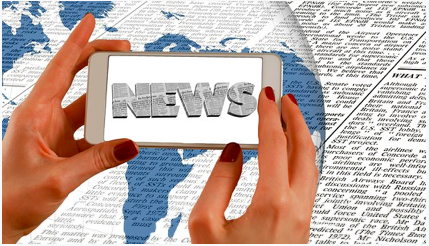7: Freedom of the Press and News/Media Literacy
- Page ID
- 124365
\( \newcommand{\vecs}[1]{\overset { \scriptstyle \rightharpoonup} {\mathbf{#1}} } \) \( \newcommand{\vecd}[1]{\overset{-\!-\!\rightharpoonup}{\vphantom{a}\smash {#1}}} \)\(\newcommand{\id}{\mathrm{id}}\) \( \newcommand{\Span}{\mathrm{span}}\) \( \newcommand{\kernel}{\mathrm{null}\,}\) \( \newcommand{\range}{\mathrm{range}\,}\) \( \newcommand{\RealPart}{\mathrm{Re}}\) \( \newcommand{\ImaginaryPart}{\mathrm{Im}}\) \( \newcommand{\Argument}{\mathrm{Arg}}\) \( \newcommand{\norm}[1]{\| #1 \|}\) \( \newcommand{\inner}[2]{\langle #1, #2 \rangle}\) \( \newcommand{\Span}{\mathrm{span}}\) \(\newcommand{\id}{\mathrm{id}}\) \( \newcommand{\Span}{\mathrm{span}}\) \( \newcommand{\kernel}{\mathrm{null}\,}\) \( \newcommand{\range}{\mathrm{range}\,}\) \( \newcommand{\RealPart}{\mathrm{Re}}\) \( \newcommand{\ImaginaryPart}{\mathrm{Im}}\) \( \newcommand{\Argument}{\mathrm{Arg}}\) \( \newcommand{\norm}[1]{\| #1 \|}\) \( \newcommand{\inner}[2]{\langle #1, #2 \rangle}\) \( \newcommand{\Span}{\mathrm{span}}\)\(\newcommand{\AA}{\unicode[.8,0]{x212B}}\)
Snapshot of Topic 7
All of us members of a democratic system of government rely on the people of the press to report the news about what happens in our neighborhood, city or town, state, nation, and world and help us make sense of what it means for our lives. Only when there is clear and unbiased information available from the press can people make decisions about what public policies and governmental actions they want to support or oppose.
- a blurring of the line between fact and opinion;
- an increasing relative volume of opinion over fact; and
- declining trust in government, media, and other institutions that used to be sources of factual information (Kavanagh & Rich, 2018)
- 7.1: Freedom of the Press
- Landmark court cases establishing the right of journalists to publish news without being censored by the government. Examples of censorship, including the anti-comic book campaign of the 1950s, modern-day attempts to ban and challenge books in America, and the Great Chinese Firewall. Rights of middle and high school student journalists, contrasted to those of adult journalists.
- 7.2: Competing Information in a Free Press
- The history of newspapers and journalism, past and present. Histories of prominent investigative journalists from the 19th and 20th centuries, known for exposing corruption in government and business. The question of whether every person needs to be their own investigative journalist, with a focus on the Watergate scandal.
- 7.3: Writing the News- Functions of Different Formats
- The different functions of news articles, editorials, political cartoons, Op-Ed commentaries, news photographs, and press conferences in reporting the news and presenting commentary and opinions on events. The impact of pioneering female newspaper cartoonists, Zelda Ormes and Dale Messick. The role of war journalists and photographers.
- 7.4: Digital News and Social Media
- The rise of misinformation in the age of social media as a major news source. Investigation into Russian disinformation campaigns of interference in the 2016 and 2020 U.S. presidential elections. The question of whether Internet access is a human right in today's world.
- 7.5: Evaluating Print and Online Media
- Defining fake news and finding reliable news sources. An overview of the history of fake news and yellow journalism in the U.S. Techniques and resources for fact-checking to distinguish reliable from unreliable news sources.
- 7.6: Analyze Editorials, Editorial Cartoons or Op-Ed Commentaries
- Investigating and analyzing the claims and point of view of an opinion piece about current events. The rise of deepfakes and fake social media profiles as a tool of political messaging. Issues of regulating political content and advertising on social media platforms.



